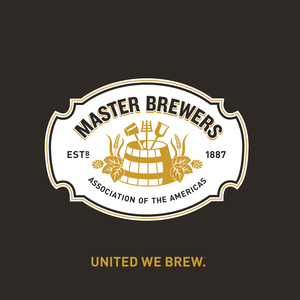Greg Casey
Special guest
Greg, born and raised in Toronto, Canada, graduated from the University of Guelph in 1979 with a B.Sc. degree in Applied Microbiology before going on to attain a Ph.D. degree in 1984 in Applied Microbiology & Food Science at the University of Saskatchewan. Following two years as a NATO Postdoctoral Scientist at Carlsberg Laboratories in Copenhagen, he returned to the University of Saskatchewan as an Assistant Professor in the Food Biotechnology Department (1986-1987). In the United States Greg held a wide variety of R & D and Corporate Quality Assurance roles with Anheuser-Busch (1987-1991), Red Star Yeast and Products (1991-1992), The Stroh Brewery Company (1992-1999) and Coors/Molson Coors/MillerCoors (1999-2013). Greg became a naturalized US citizen in 1992 and served as the President of the American Society of Brewing Chemists in 2005-2006.
In retirement Greg’s passion is researching the debate which took place in America from the 1870s to the 1910s over the question of “What is Beer?” Since 2007 Greg has assembled over 17,000 primary period references specific to this debate, triggered amazingly simply by the use of rice and corn based malt substitutes to produce a lighter, paler and most importantly, chill proof, lager beer. In a highly public back and forth battle between the brewing industry and literally virtually every institution of power in America, efforts to impose an American Reinheitsgebot were successfully thwarted, leaving a legacy of immense benefit to both craft and “macro” brewers today.
Greg Casey has been a guest on 3 episodes.
-
Episode 332: Substitutes for the Substitutes of the Substitutes
April 21st, 2025 | 58 mins 36 secs
The last of the three-part series of Technical Quarterly articles providing insights to the upcoming MBAA publication The Inspiring and Surprising History and Legacy of American Lager Beer: 1941–1948, the focus of this paper is a review of the American brewing industry during the tumultuous years of World War II (1941–1945) and those immediately following in support of global famine relief (1946–1948). This is perhaps the most remarkable 7 year period ever in the history of the American brewing industry, with production rising by just over 36 million barrels of beer—a staggering increase of 65.3%. While the beer before and after this period was very similar, the beer in between was anything but. Surprisingly, the brewing materials that were scarcest during this period were rice and especially corn-based adjuncts, not malt. But perhaps the greatest surprise of all was that the beer fueling the explosive growth was a significantly lighter, lower original gravity, and lower malt-to-adjunct ratio beer. Indeed, for a time during 1945, the industry's overall use of adjuncts exceeded 50%. A stunning array of materials—many never used prior or since—were employed to brew America's adjunct lager beer. Included in the “adjunct potpourri" were an astounding 141.5 million pounds of cassava products (e.g., manioc and tapioca) and 12.8 million pounds of potatoes. Surprisingly, however, both were first used after World War II, during the Relief years, triggered by federal mandates restricting the use of rice and corn in brewing. All material restrictions lifted in the summer of 1948, and supplies of all brewing materials returned to pre-war levels, but few in the industry could ignore that the lighter lager of the war and famine years had triggered a profound upward step-shift in sales. In the decades that followed, annual industry volume remained largely static, even declining on a per capita basis. Not until 1964 would the industry finally reach 100 million barrels of domestic production, followed in 1970 by the surpassing of the post-Prohibition per capita record of 1948. Buoyed by the 1973–1982 introduction of the modern 100 calorie light adjunct lagers, new records were subsequently set with per capita consumption of domestically produced beer reaching 26.17 gallons in 1981 and domestic production of 203,658,410 barrels in 1990, records that still stand. However, despite the phenomenal growth experienced by the American craft brewing industry over the past 30 years, by 2019 overall industry performance against per capita and annual domestic production metrics has declined by 9.26 gallons and 24.6 million barrels of beer, respectively. Insights to spur 21st century growth, for both macro and craft brewers alike, can be found in the lessons of the past.
-
Episode 198: Bierkrieg: Follow the Money
February 3rd, 2025 | 56 mins 32 secs
The guy who explained how we narrowly avoided an American Reinheitsgebot on episode 174 is back with more surprises. This time you'll hear about the widespread use of malt substitutes in Germany, a beer war, and the birthplace of America's most popular beer style.
-
Episode 174: WHAT IS BEER?
July 22nd, 2024 | 1 hr 10 mins
"The Inspiring History and Legacy of American Lager Beer" is envisioned to be a nine-volume series of books covering the history of the American lager brewing industry from the 1840s to the 1940s and the evolution of adjunct lager beer as America’s “national beverage.” The “surprising” aspect of this history is that it ever happened at all, given the half-century-long assault on the industry between the 1870s and 1910s to impose an “American Reinheitsgebot.” Unified in this objective were a plethora of the nation’s political, cultural, and agricultural institutions—all seeking to ban to use of rice and corn-based products in the brewing of American ales and lagers. Equally united in opposition to this effort were the brewers and brewing scientists of America. In battles that were passionate, highly public, and intense in nature, these brewing industry advocates successfully defended the right of American brewers to brew with the ingredients of their choice. It is a powerful legacy not only for America’s first revolution in beer (the adjunct lager brewing industry) but also for the nation’s second revolution in beer (the American craft brewing industry).
